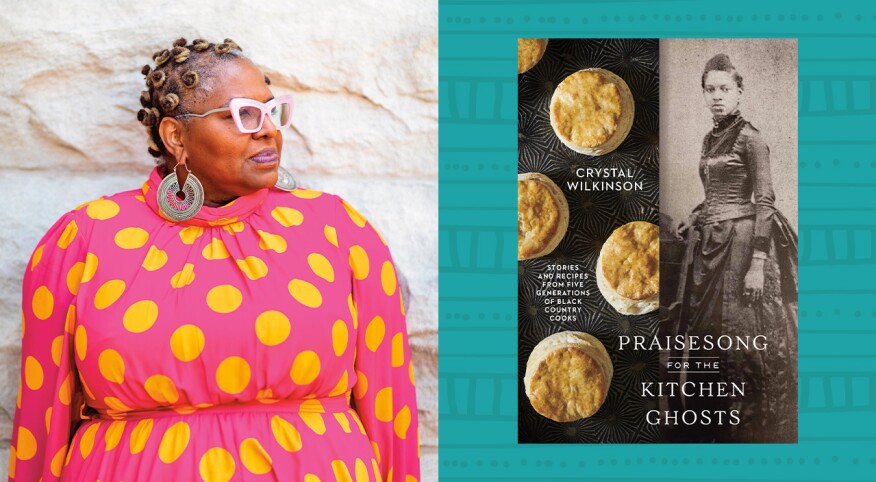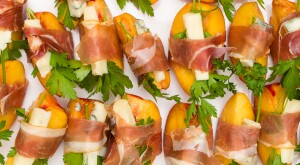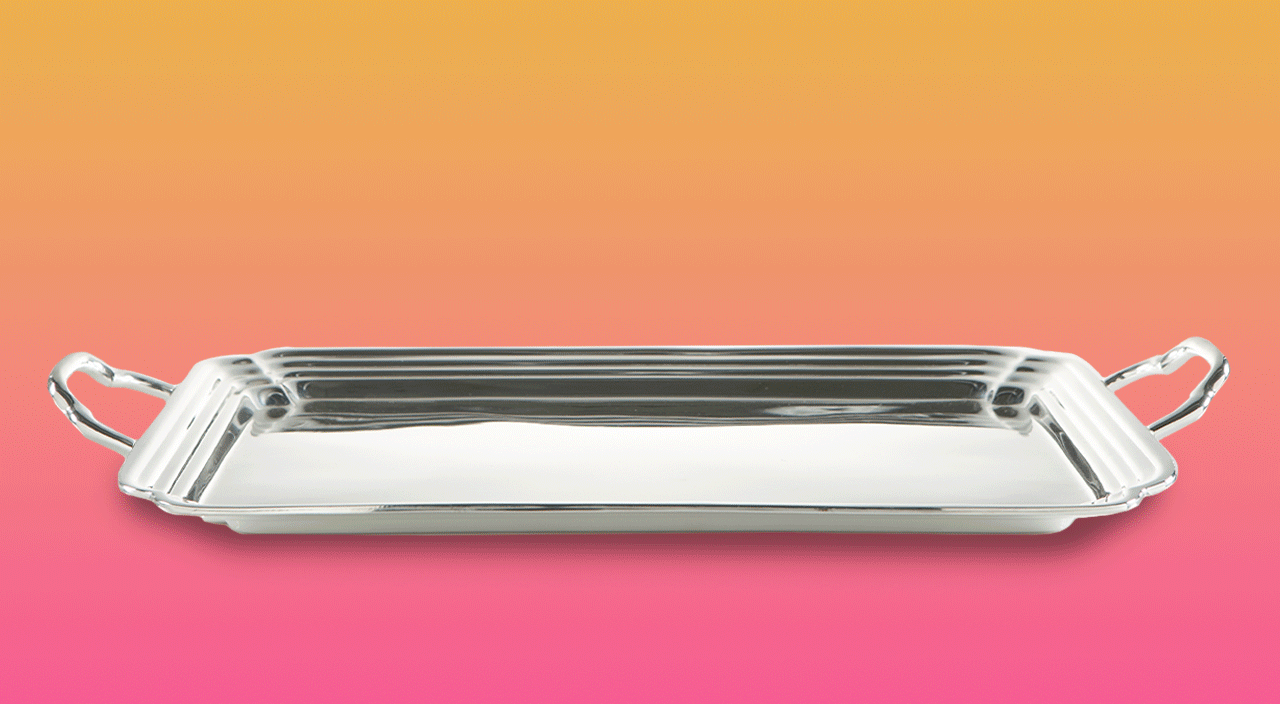When you envision an Appalachian family, do you picture Black folks? Crystal Wilkinson’s kin has lived in the hills of Casey County, Kentucky for the past five generations. Their geographic region, located in the central and southern Appalachian Mountains, stretches from western New York state and includes parts of Pennsylvania, Ohio, Virginia, West Virginia, Tennessee, Mississippi, Maryland, The Carolinas, Kentucky, Georgia, and Alabama.
Wilkinson emphasizes that “being Black is not a monolith.”
“My family grew up a particular way: As country people, which is different from the rural South, which is different from the North, which is different from anyone who is Caribbean American…think about all the various ways of cooking, eating, and being.”
This family’s mountainous region, storied for its remoteness, is now home to more than 20 million people. Appalachia has a rich history of diverse foodways that center on fresh, seasonal ingredients. In addition to Indigenous and immigrant populations, generations of African American residents have contributed food preservation techniques as well as tasty staples like poke salad, johnny cakes, peanut beans, and bourbon-inspired baked goods.
Wilkinson’s latest memoir, Praisesong for the Kitchen Ghosts, traces her family’s recipes and gives thanks to the foremothers who baked, cured, and sautéed with love.
Enter here to win a copy of Crystal Wilkinson’s Praisesong for the Kitchen Ghosts.
It all started in grandma’s kitchen
Wilkinson, who lived with her Kentuckian grandparents in Indian Creek, has strong memories of that kitchen – getting her hair pressed, for instance. Most memories revolve around growing, cooking, and preserving food.
“Every morning of my childhood, my grandmother donned an apron and cooked breakfast. Slow. Precise. Deliberate. She equated food with love. And she cooked with both a fury and a quiet joy,” writes Wilkinson in her memoir.
Taste the love for yourself. Scroll down for Grandmother’s Blackberry Cobbler recipe!
Food wasn’t the only thing she learned from her grandmother. It was there in that kitchen that she heard stories of her ancestors whom she credits for her own enjoyment of cooking. When Wilkinson began researching, she became obsessed with photographs and records like the deed in which her ancestor Aggy Wilkinson who arrived in Kentucky from Virginia and given a list of household cooking items.
“The items include a table, six knives, and forks, six plates, and earthen vessels in which to cook,” states Wilkinson. She adds, “these items gifted to a formerly enslaved woman was the start of a long lineage of cooking.”
Preparing traditional meals with a twist
In the book, Wilkinson advocates for variety in cooking styles. She includes recipes, like the “Mess O Meatless Greens” that evolved from an original meat-inclusive dish into a tasty vegetarian recipe. After all, Wilkerson spent nearly 20 years as a vegetarian and her children still enjoy hybrid meals that include options like scrambled tofu and vegan macaroni and cheese.
“Many of the recipes in my memoir are regional, but I also wanted them to be accessible for everyone. When I became a vegetarian, I took my family’s favorite meals and remixed them,” says Wilkinson.
Discover delicious history—and cook up new family memories—in the kitchen
“All the kitchen ghosts, even the ones moving forward, should not solely be women,” says Wilkinson. She continues, “It’s not a gendered thing to be in the kitchen and cook. My son can cook with the best of them. My husband, on the other hand, isn’t the best cook, but he’s a marvelous sous chef…and does all the cleanup…I appreciate how I was raised, but now and in the future it’s all about everyone working together.” Some ways to get started:
● Inquire about family recipes. Ask your aunties, grannies, and cousins for family recipes that have been shared for generations. “A huge part of our culture involves the oral tradition--storytelling. My grandmother's recipes were not always written down, but I was the record keeper. I was the griot and recorded them as she told me the directions aloud.” Make it easy with an app such as Paprika Recipe Manager, BigOven, Yummly or Recipe Keeper.
● Take plenty of photographs. You can tell so many stories with images. Pictures of the actual dishes, pictures of meal preparation, pictures of the elders, pictures of ingredients. Images carry our memories, so get that (phone) camera out and snap away!
● Honor traditions, while creating new ones. You can show gratitude to the ancestors by cooking the foods they ate, but it’s important to simultaneously create new traditions as well. This is significant for anyone who is estranged or might not know their families. You don’t have to know the intimate details of your past in order to create a future.
● Ask for help filling in the gaps. “As I was writing this book, relatives provided photographs that I didn't realize existed and a woman my grandmother worked for gave me a recipe in her handwriting that I had never seen,” adds Wilkinson.
● Start a sister circle. Breaking bread is one of the ways we process emotions and, especially as Black women, we need multiple outlets for this kind of community care. “In the early 2000s, we used to have sister circles. Everyone would bring a dish, and we would sit in a circle, eat, drink, and check in. We did it every week. And some people would say, ‘Oh, this happened at work, my children did this’, and so on. Through these gatherings, I realized that there is nothing more healing than having a bite to eat with people you care about and checking in,” explains Wilkinson.
Enter here to win a copy of Crystal Wilkinson’s Praisesong for the Kitchen Ghosts.
Grandmother’s Blackberry Cobbler
Uncle Sherman and Aunt Lo, who can both come close to re-creating this dessert—my grandmother’s prized blackberry cobbler—say the secret to perfection is in the crust. The sugar sprinkled on top gives this one a lovely look. An 8-cup casserole or 8-inch Pyrex baking dish works well here. This deep-dish, wrap-around rolled crust method is something like an old-fashioned pandowdy that was popular in the1800s, where you dowsed the crust into the fruit mixture and baked it in a skillet. I was an adult before I perfected this cobbler; getting the ratio of fruit, juice, and crust in each bite is important. This cobbler screams July in Kentucky to me, even if it’s the dead of winter and you are anywhere in the world.
Serves 6
For the fruit
1 cup sugar
4 tablespoons (½ stick) salted butter
16 to 18 ounces fresh blackberries
(3 generous cups), preferably wild if you can find them
For the crust
2 cups all-purpose flour, plus more for rolling
1 teaspoon table salt
⅔ cup cold vegetable shortening
½ cup ice water, or as needed
1 tablespoon sugar, for sprinkling
Make the fruit:
Combine the sugar, 1 cup water, the butter, and
blackberries in a large saucepan. Bring to a boil over medium-high heat. Cook for 6 to 8 minutes, stirring only after the berries begin to soften, the butter has melted, and the liquid in the pan turns deep purple. Do not overcook. Remove from the heat and let cool while you make the crust.
make the crust:
Combine the flour and salt in a chilled glass, ceramic, or metal mixing bowl. Use a pastry cutter or two forks to work in the shortening, blending until the mixture is the consistency of coarse meal. Again, do not overwork it. Add half of the ice water, stirring to form a dough that begins to gather, then continue to add a little more ice water at a time—just enough for the dough to hold together. You may not use all the water.
Lightly flour a rolling pin and your work surface. Turn out the dough and roll it out evenly to a size much larger than your cobbler/casserole pan. Lay the dough in the pan so there is a generous amount of overhang on all sides (1 to 2 inches or so). Use the tines of a fork to dock the bottom of the dough in several places.
When you’re ready to assemble the cobbler, place a rack in the middle position and preheat the oven to 350°F. Spoon the cooled, softened fruit and some of its liquid into the dough-lined pan. The berries should not be “swimming.” Discard or reserve the remaining liquid to cook down for an accompanying syrup; see Note.
Pull the overhanging dough up toward the center on all sides to cover most of the fruit. Sprinkle the top with the sugar. Bake on the middle rack for 40 to 45 minutes, until the crust is lightly browned and any exposed fruit is bubbling. Spoon into bowls and serve warm or at room temperature.
note: While the cobbler is baking, you may cook down the extra berry liquid to create a syrupy sauce you can serve with the cobbler or with ice cream, or use it to flavor drinks. Simply pour the leftover cooking juices in a saucepan and simmer over medium heat until thick enough to coat a spoon, 15 to 20 minutes. Let cool.
Reprinted with permission from Praisesong for the Kitchen Ghosts: Stories and Recipes from Five Generations of Black Country Cooks by Crystal Wilkinson copyright 2024. Photographs by Kelly Marshall copyright 2024. Published by Clarkson Potter, an imprint of Penguin Random House.














